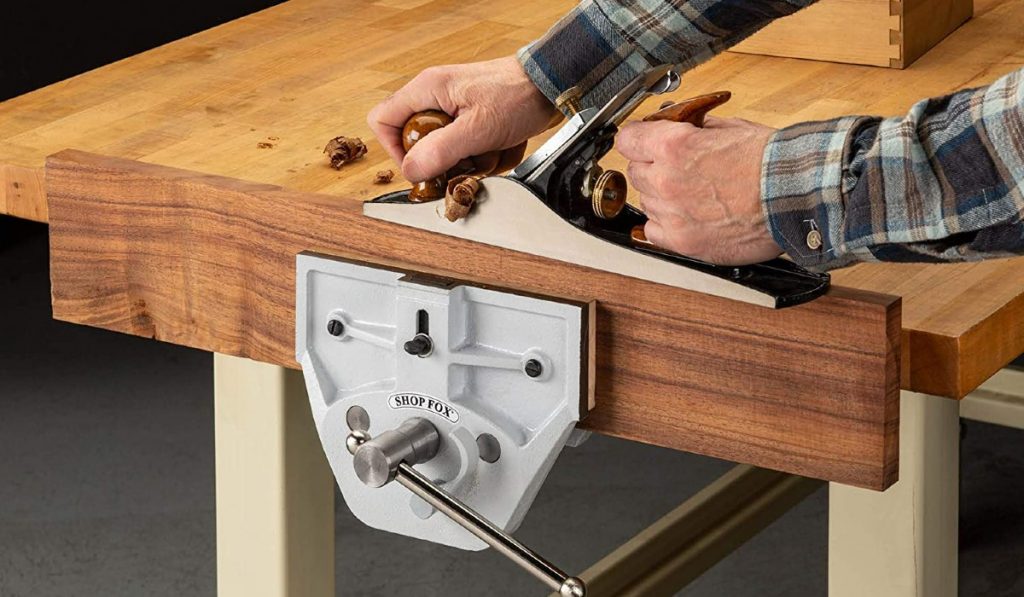Add This to Your Workbench To Improve Your Projects’ Quality

A woodworking vise is a device used to secure wood so that it can be worked on. There are two main types of woodworking vises: the face vise, which is mounted to the front of the workbench, and the tail vise, which is mounted to the end of the workbench. Both vases can be useful for your woodshop, it just depends on what your needs are. In this blog post, we’ll be focusing on the tail vise and what its differences are compared to a face vise and their uses.
TAIL VISE AND FACE VISE
Tail vises are mounted on the far end of your workbench, away from where you’re standing. This makes them ideal for holding long boards in place while you work on them. Face vises are mounted near the front edge of your workbench, close to where you’re standing. This makes them better suited for holding shorter boards or for working on smaller pieces that need to be clamped down closer to where you can reach them.
Another difference between tail vises and face vises is that tail vises have jaws that open and close along the length of the vise, while face vises have jaws that open and close along the width of the vise. This means that tail vises are better suited for clamping longer boards in place, while face vises are better suited for clamping shorter boards or smaller pieces.
Finally, tail vises typically have more holding power than face vises because they’re mounted further away from where you’re standing. This gives them more leverage, which means they can hold your workpiece more securely in place. If you’re working with large or heavy boards, or if you need to apply a lot of force to your workpiece while you’re working on it, a tail vise is the best option.
TAIL VISE USES
Secure wood for sawing
When cutting wood with a saw, you’ll need to secure the piece of wood so that it doesn’t move around. A tail vise is perfect for this job because it will hold the wood in place while you saw.
Secure wood for drilling
Similar to sawing, when you’re drilling into wood, you’ll need to make sure that the piece of wood is securely held in place. Otherwise, the drill bit could slip and cause damage to the piece of wood or even injure you. Again, a tail vise is perfect for this job.
Secure wood for shaping
When shaping wood with hand tools such as chisels or files, it’s important to have a good grip on the piece of wood so that you can produce clean cuts and achieve a smooth finish. Once again, a tail vise will come in handy and do a great job of holding the wood in place while you work on it.
Hold multiple pieces of wood together
If you’re working on a project that requires you to glue multiple pieces of wood together, a tail vise can be used to hold those pieces in place while the glue dries. This way, you can be sure that the pieces will stay aligned and won’t slip out of place.
To serve as an assembly station
Once your project is complete and all of the pieces have been glued together, you can use the tail vise to hold everything in place while you attach any hardware, such as hinges or screws. This way, you can have both hands free to work on attaching the hardware instead of having to hold everything in place yourself.
CONCLUSION
There are many ways vises can be used in your woodworking shop. If you don’t have one already, we highly recommend adding one to your tool collection. It’s a versatile tool that will come in handy for all sorts of tasks related to cutting, shaping, and assembling wood projects.
